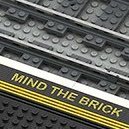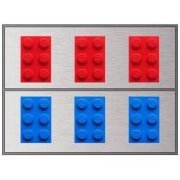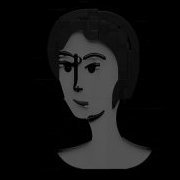Search the Community
Showing results for tags 'architecture'.
Found 375 results
-
Russian church Inspired by: Saint Basil's Cathedral in Moscow, Russia (built in 1555-1561) This building is a part of a series of 21 buildings built in different architectural styles. Each building is built on one 32x32 baseplate: https://www.flickr.com/photos/66344850@N06/albums/72157708211032315
- 9 replies
-
- architecture
- russia
-
(and 3 more)
Tagged with:
-
Nabataean Temple Inspired by: Al-Khazneh in Petra, Jordan (built in the 1st century AD) This building is a part of a series of 21 buildings built in different architectural styles. Each building is built on one 32x32 baseplate: https://www.flickr.com/photos/66344850@N06/albums/72157708211032315
- 1 reply
-
- architecture
- petra
- (and 4 more)
-
Neoclassical building Inspired by: United States Capitol, USA (built in 1793-1800, dome built in 1855-1866) Vermont State House, USA (built in 1858) Wisconsin State Capitol, USA (built in 1906-1917) This building is a part of a series of 21 buildings built in different architectural styles. Each building is built on one 32x32 baseplate: https://www.flickr.com/photos/66344850@N06/albums/72157708211032315
-
Baroque church The exterior is inspired by: Church of St Anne in Budapest, Hungary (built in 1740-1762) The interior is inspired by: Winter Palace in Saint Petersburg, Russia (built in the 18th century) This building is a part of a series of 21 buildings built in different architectural styles. Each building is built on one 32x32 baseplate: https://www.flickr.com/photos/66344850@N06/albums/72157708211032315
- 1 reply
-
- architecture
- baroque
-
(and 1 more)
Tagged with:
-
Renaissance building Inspired by: Rosenborg Castle in Copenhagen, Denmark (built in 1606-1633) Børsen in Copenhagen, Denmark (built in 1619-1640) Green Gate in Gdańsk, Poland (built in 1564-1568) This building is a part of a series of 21 buildings built in different architectural styles. Each building is built on one 32x32 baseplate: https://www.flickr.com/photos/66344850@N06/albums/72157708211032315
-
Typical Brick Gothic church from the Middle Ages Inspired by: Roskilde Cathedral, Denmark (built in 1200-1280 with later extensions) Aarhus Cathedral, Denmark (built in 1420-1480) This building is a part of a series of 21 buildings built in different architectural styles. Each building is built on one 32x32 baseplate: https://www.flickr.com/photos/66344850@N06/albums/72157708211032315
- 4 replies
-
- architecture
- gothic
-
(and 2 more)
Tagged with:
-
Typical Gothic church from the Middle Ages Inspired by: Chartres Cathedral, France (built in 1194-1220) Notre-Dame Cathedral in Paris, France (built in 1163-1345) This building is a part of a series of 21 buildings built in different architectural styles. Each building is built on one 32x32 baseplate: https://www.flickr.com/photos/66344850@N06/albums/72157708211032315
- 5 replies
-
- architecture
- gothic
-
(and 2 more)
Tagged with:
-
Support the project on LEGO Ideas! More Photos on Flickr! The Concession Corner is a high-profile modular building that is perfect for a bustling downtown scene! I made it to be compatible with existing modular buildings. To make the project unique, I decided to make this an end piece inspired by the likes of the Flatiron building. The sidewalk wraps around the entire perimeter, so it can connect both forwards and backwards. I made it on a 32x32 baseplate for the bulk of the set and a 16x32 baseplate for the tall bay window, which wraps around the two sides and gives a great view. This set works well standalone on all sides. It consists of about 2900 pieces and features two tall stories. It features a Fast-Casual restaurant on the first floor, and a loft office space on the second floor. I went through a lot of iterations to pack in building techniques that I'll let you discover. Ground Floor: On the first floor, there is a lot of space outside to pose minifigures. There is a velvet rope line leading into the restaurant, a bus stop with a wrought-iron bench, and two cherry blossom trees on either corner. In the back, there is an entrance to the kitchen and stairs to the second story. When you first enter, you can pick up a menu under a cool burger sign, or pick from the chalkboard above. The employees would be glad to help prepare food at the counter, either to stay or to go. There is substantial dine-in seating, a fountain soda machine, a condiment table, and a handicapped exit. The kitchen has an industrial fridge, a wide grill for searing fresh patties, a sink, and a cutting board. Second Story Once you go up the stairs through the back of the building, you can enter a classy lobby to be greeted by a professional to help you with any studio needs: drafting, interiors, graphics, even contemporary paintings. There's a futon, a runner and two desks, plus a balcony to view the outside. I included six different minifigures representing children, cashiers, managers, patrons, or anything you want them to be. Thank you very much for taking the time to check this out!
- 16 replies
-
- restaurant
- architecture
-
(and 6 more)
Tagged with:
-
Typical Romanesque church from the Middle Ages Inspired by: Lund Cathedral, Sweden (completed in 1145) Viborg Cathedral, Denmark (built in the 12th century, but reconstructed in 1876) Ribe Cathedral, Denmark (built in the 12th century) This building is a part of a series of 21 buildings built in different architectural styles. Each building is built on one 32x32 baseplate: https://www.flickr.com/photos/66344850@N06/albums/72157708211032315
- 1 reply
-
- architecture
- romanesque
-
(and 2 more)
Tagged with:
-
Typical Byzantine Church Inspired by: Church of the Holy Apostles in Athens, Greece (built in the 10th century) Little Metropolis Church in Athens, Greece (perhaps built in the 13th century) This building is a part of a series of 21 buildings built in different architectural styles. Each building is built on one 32x32 baseplate: https://www.flickr.com/photos/66344850@N06/albums/72157708211032315
- 3 replies
-
- architecture
- church
-
(and 2 more)
Tagged with:
-
Roman amphitheatre Inspired by: Colosseum in Rome, Italy (built in 70-80 AD) This building is a part of a series of 21 buildings built in different architectural styles. Each building is built on one 32x32 baseplate: https://www.flickr.com/photos/66344850@N06/albums/72157708211032315
- 2 replies
-
- architecture
- ancient
-
(and 3 more)
Tagged with:
-
Octan Avenue, the newest addition to the modular street! I promised myself I would complete a new modular in less than the year it took to complete my previous: Baseplate Alley, but here we are. Exactly another year since my previous model, here’s my eleventh modular: Octan Avenue (yes, I'm simply using a well-known Lego brand as a street name, despite the building having nothing to do with it!) The design of this modular began in Autumn of 2019. On my way to university, every day I would go past a building in Les Rambles in Barcelona that just seemed quite fitting to turn into a modular. While in no way a stunning piece of architecture, the entrance to the Plaça Reial is orthogonal enough for it not to be a nightmare in Lego bricks but has quite an interesting mix of porticos, asymmetrical façades and clearly marked centrepieces in the corners to the middle street. This building reminded me of another similar building from Palma de Mallorca. Again, mirrored façades with an alley in-between. This one, though, with much more adorned Art Nouveau flair. For my model, I kept aspects of both sources of inspiration plus a bit of my own magic. My building has the alley over on one side, simpler window designs and the running portico (like the building in Barcelona) but much more pronounced tower-like elements protruding with very prominent designs on top (like the building in Palma). Building the tops of the towers was remarkably difficult. Because the yellow building naturally has more presence as it has more volume, I needed a spire that would draw attention and finalise the design effectively but not overshadow the blue building. This is why the tower top in the blue building is wider and a tiny bit taller. Hand on heart, I was stuck doing all kinds of spires for both buildings for a good month and a half until the combination of these two worked well. A simple 360º view: ============ Interiors: My focus is always on exteriors and nailing those. Interiors are always the second half of the job. I like coming up with original quirky shops to fill my modular and in this case, they are: Yellow Building: Model Store This one was quite fun to do. The ground level has models of two airplanes: 10226 Sopwith Camel and the one the kid in 10270 Bookshop is playing with (he had to buy it somewhere didn’t he?) The middle level has a model of the recent 10277 Crocodile Locomotive and of my three first modular: Magic Shop, Italian Villa and The Iron Horse (2016). You can find them on my Flickr, Instagram or their respective EB topics. The top level has five more mini-modulars of mine: Sweets & Co, A Summer in Tuscany (2017); Klee Corner, Disco 2000 Vinyl Store (2018) and Baseplate Alley (2019). Blue Building: Rug Store For the blue building, I needed a shop that housed items on its walls as it barely has any floor space. A rug store is ideal. The ground level houses the staircase to the middle floor and a bunch of boxes and items that are little Easter Eggs to official modular. Both the middle and top floors and full of rugs! My personal favourite is the black and white one on the middle floor. Video of the modules flying around and showcase of the interiors: ============ Like I did with my previous model, you can have a look at the 3D model to explore all the little nooks and crannies: Exterior Interiors ============ Thanks for reading through and hope you enjoy this model!
-
Typical temple from the Ancient Greece. Inspired by: Parthenon in Athens, Greece (built in 447-432 BC) Temple of Hephaestus in Athens, Greece (built in 449-415 BC) Erechtheion in Athens, Greece (built in 421-406 BC) This building is a part of a series of 21 buildings built in different architectural styles. Each building is built on one 32x32 baseplate: https://www.flickr.com/photos/66344850@N06/albums/72157708211032315
- 14 replies
-
- architecture
- ancient
-
(and 1 more)
Tagged with:
-
Hello there! I wanted to show my first real architectural steps in the Star Wars World - I got inspired by the Mega-Project from Solid Brix Studios. I really like the design of Mandalore, it's simple and beautiful and effective. But enough words, see for yourself:
- 11 replies
-
Hi everyone I'm new here in the forum and like to share my first MOC which I have been working on over the last 3 months. I build the MOC with BrickLink Studio 2.0 and used the new Eyesight Render for my images. I love the modular building sets from Lego but I missed the detail level on the upper floors. According to this I decide to design and build a more detailed modular building with more minifigures than the regular ones from lego. This building represents a classic British pub with a lot of typical details like a British cab, a London phone box, a classical English pub facade with a lot of flowers and much more. The modular style building with 3 floors and an accessible roof is built on a 32x32 base plate and contains 32 minifigures and approximately 6000 parts. Level 1 - Bar The first floor contains the main bar area of the pub and small full-featured restroom with toilet, urinal and lavatory. Outside there are bar tables and a red phone box. Minifigures Craftsman enjoying his after-work beer Bobby (Police Officer) on patrol Barkeeper and owner of the Lion Pub Regular guest who enjoys his retirement Best friends enjoy their free evening Level 2 – Gambling room The second floor features a gambling room complete with a pool table, poker corner and dart board. There is also a balcony on the back side to the backyard. Minifigures Young couple play a game of pool Office worker playing a game of darts Student can't keep his hands off gambling Housewife practices her passion at the poker table Professional poker player Level 3 – Live Music The third floor features a stage for live music, a small bar and a second full-featured restroom. Minifigures Punk who also loves Rock'n'Roll Aging hippie Piano player Elvis imitator and musician Groupie Barmaid Businessman enjoys a cool pint Champagne connoisseur and music lover Level 4 – Rooftop Party The last level offers space for a roof top party with a sitting corner under the overgrown pergola, bar tables, barbecue and DJ. Minifigures Man enjoying the delicious Hotdogs Barbecue chef Security DJane Female dancer Boyfriend of the female dancer Bestfriends start the evening with prosecco Celebrity couple Cab / Taxi Last but not least, the MOC offers a Classic London Cab heavily influenced by the "TFL Classic London Cab Taxi" from bamsham363 Minifigures Businessman treats himself to a pint Taxi driver Thanks very much for reading and I hope you like my first MOC. There are more pictures on Bricksafe and feel free to support my MOC on Rebrickable and let me know what you think. At the moment I am building my MOC with real Lego bricks. As soon as possible I will post any photos of the real lego building.
- 23 replies
-
- stud.io
- architecture
- (and 13 more)
-
I ve being thinking for a while to share with you my Lego Ideas Mocs... and I ve being hesitant. Well I decided to go ahead and do it!!! These is my latest moc and I m planning to upload the others too :) https://ideas.lego.com/content/project/link/3c993b46-9c04-400b-a633-86dd613463cc Based on several Japanese Traditional Watermills, this modular structure works both manually or with added Power Functions. It is made from 2073 Lego bricks, 3 minifigures and PF are also included in the count. When I began my research into Japanese Traditional Architecture I became fascinated with its Watermills... Such simple structures but at the same time so intriguing mechanisms that perform a simple task of grinding! My Working Watermill With Interior & Power Functions consists of the roof, a ground floor and a basement. The big Mill turns either by turning the crank on the rock in the river or by power functions that can be added in the basement. It creates movement in the mechanism found on the ground floor. If PF are not added the basement works as a storage for the seeds that are harvested and awaiting to be grinded. This would make a great set as I feel a working watermill is something missing from Lego sets. Its is very playful and could be easily added in a modular landscape. I m currently in the process of gathering bricks and hopefully before the end of the year I will be able to make it a real-life model! I would like to thank my dear friend @Patgeo for helping me work out and simplify the gears and power function mechanism!!!
-
IMG-20200718-WA0037 by Barney Rayfield, on Flickr Apologies, I am still getting my head around adding photos or hotlinks to Eurobricks. Now on Youtube https://www.flickr.com/gp/189396852@N04/M022um The Royal Albert Hall is situated in South West London and is one of the most internationally recognised buildings. Designed to promote the arts and sciences it has since 1871 maintained its hectic schedule of rock gigs, classical music concerts, community and school concerts, comedy, circus, lectures, film premieres and sports, including tennis and even boxing. It is the Rolls Royce of village halls! IMG-20200718-WA0035 by Barney Rayfield, on Flickr The base hinges to split the hall and reveal the auditorium with organ and a grand piano. 20200718_210753 by Barney Rayfield, on Flickr 20200718_210544 by Barney Rayfield, on Flickr The detailed roof (including the ceiling 'mushrooms' to improve the acoustic) can be lifted as can the auditorium. Each half of the hall can be lifted out to access a basic representation of the loading bay, car park, backstage and arena bars. 20200718_210251 by Barney Rayfield, on Flickr 20200718_211952 by Barney Rayfield, on Flickr 20200718_211130 by Barney Rayfield, on Flickr Further details include the south steps with John Durham's statue of Prince Albert presiding over representations of the four continents and the tree outside stage door planted in tribute to Mario Lanza. IMG-20200718-WA0041 by Barney Rayfield, on Flickr Part dolls house, part Russian doll this basically consists of 5 components (base, both halves of the exterior, auditorium and roof) slotting inside the other. https://ideas.lego.com/projects/183167bd-8302-4cbc-bf1d-42f26e96a9dd/comments_tab#content_nav_tabs Please support on Ideas if you like. Many thanks. 20200718_211001 by Barney Rayfield, on Flickr I had been stockpiling dark red and tan Lego for some time even though I was too busy to contemplate building the Hall. Then with Covid 19 and the lock down I suddenly had no excuse. The Royal Albert Hall is very close to my heart: I work there and to see it shut and empty is beyond heart breaking. IMG-20200718-WA0032 by Barney Rayfield, on Flickr I finished this just as the 2020 Proms started and this is a model to celebrate not just a venue but live music the world over. Wherever you are please look after your arts venues. They will be the last parts of the economy to be reopened and need our help. 20200718_205647 by Barney Rayfield, on Flickr 20200718_214133 by Barney Rayfield, on Flickr Please do go to the Royal Albert Hall's website if you want to donate but in the meantime I hope you like the model. Please tell your friends. I am barely on social media so fee free to share photos of it. I might need a piggy back to get this seen. IMG-20200718-WA0038 by Brney Rayfield, on Flickr
-
Welcome to "The Happiest Place on Earth!" I designed a skyline for each of the four main Walt Disney World parks - with each park's primary icon in the center of each. The length of each skyline is the same (and identical length to the official London and Paris skyline sets). Any one who may be interested in instructions can find them here and on Rebrickable.com! MAGIC KINGDOM: EPCOT: HOLLYWOOD STUDIOS: ANIMAL KINGDOM: Let me know what you think!
- 7 replies
-
- skyline
- architecture
-
(and 2 more)
Tagged with:
-
It's wonderful to see that The LEGO Group's confidence in the Architecture Series has increased enough for worldwide landmarks to appear! In what might seem opportunistic timing, with the fast approaching 2012 Olympics being held in London, TLG has revealed that its latest Architecture set will model what is probably London's most iconic landmark: the clock tower of Big Ben. As has been pointed out innumerable times, Big Ben is actually the name of the huge bell which resides within the tower, itself forming the north-west corner of the Palace of Westminster; the tower itself is known simply as the Clock Tower. But if you say 'Big Ben', I imagine people from around the world will immediately picture this famous tower. This review is a team effort by Pandora and myself (with a little extra help from a certain someone at a crucial point ). The opinions presented here are ours; fortunately we agreed on pretty much everything so there was little need for discussion! Anyway, with further ado, Pandora and Rufus are proud to present.... Review: 21013 Big Ben Set Information Name: Big Ben Number: 21013 Theme: Architecture (Landmark Series) Release: 1 June 2012 Parts: 341 (our count) Price: US $29.99 | EUR 29.99 | CAD $39.99 Links ... Brickset ... LEGO Architecture We'll update the price information, links and the official set description as they become available. The Box The smart but rather austere box livery of the Architecture range continues with this set. I see no reason to change it! Big Ben sits atop a technical drawing which may well represent architectural plans of the Palace of Westminster, but who's checking. The eagle-eyed among you might note that this latest addition to the Architecture range is designed not by Adam Reed Tucker, but instead by Rok Zgalin Kobe, a Slovenian architect. The back of the box is more colourful, sporting a scale render of the model, with some pictures of the real building in atypical English weather: The text is a language lesson describing the enclosed booklet, which is in English, and mentions the two Architects of the tower, Charles Barry and Augustus Pugin. The narrow sides are well suited to a tall, narrow model, and allow the boxes to be stacked on shelves vertically. The left side features a beautiful low-down shot of the tower: ... while the right side, which forms the flap of the box lid, shows an interesting 'exploded' render of the model beside the 'Choking Hazard' warning in a vast array of international languages. A very small part-rendered picture graces the top of the box, and the bottom reveals that parts were sourced in DENMARK, HUNGARY, MEXICO, and the CZECH REPUBLIC. We suspect this represents different manufacturing sources for different regions. Interestingly, this set - despite being considerably larger - comes in a box no bigger than those of the smallest sets in the range. It is of identical size to 21002 Empire State Building, or 21000 Willis (formerly Sears) Tower, Chicago, pictured here: It is, as you might imagine, considerably heavier, and clearly requires two extra years of building experience to build it. Contents We love these Architecture boxes! There's a certain sense of nostalgia for the days of intricate packaging which heightened the whole LEGO experience. Admittedly these don't have the (expensive, we've no doubt) plastic inserts and lifting lids of the 80s, but it's clear that TLG have gone to some pains to make the box as collectable as the set. You can even flatpack the box for longevity without tearing or cutting! The box is almost as smart on the inside: This one is remarkably full, which helps to preserve the instruction manual. You are instructed clearly to 'Enjoy your building experience.' as you open the lid. It's a really nice touch, and emphasises the lengths TLG has gone to to maximise the ... um ... building experience. Out of the box are pulled four polybags, and two loose plates. As Siegfried/Sinner mentioned in the Sydney Opera House review, it's a shame that not all of the parts are bagged, but we can't really blame LEGO for this in this case. It's only two pieces, and would probably require much larger bags, which might in turn necessitate a larger box to allow automated packing. Looking at this picture, you immediately get a sense of the rather small parts variety - there are only 33 different pieces in the set, including different colours of the same part. Instructions Some serious thought has gone into this instruction manual. It is quite thick, and beautifully presented, being printed on high quality paper, like all the sets in the Architecture range. Aside from the difference in orientation, the cover is similar to the box front, but does reference the Architecture website. The rear cover of the manual features an alternative view of the tower from behind: but is otherwise rather plain. Most of the interest is contained inside the manual, where can be found ten pages of facts about the tower and its construction, an example of which is shown here: The text is superbly written. It is a potted history, packed with facts and interesting to read, without being a daunting mass of text. We learned quite a lot ourselves! Following the tower facts comes a double-paged biography of the architects: The pictures here are reprints of oil portraits of the long-departed designers of the tower. Again, kudos to LEGO for going the extra mile to add interest and value. The instructions themselves are clear, and nicely paced to avoid confusion without being patronising. About every eight or nine pages is a little inset depicting further little factoids about the building: It's easy to miss these, if you are concentrating on the building. We'd recommend taking your time when building, and enjoying these little tidbits of information when you encounter them! They are a really nice touch. Otherwise, there are some parts in similar colours (particularly black and dark bluish grey), which could cause confusion; however, if you follow the build order then there shouldn't be any problems. You would notice if you used a dark bluish grey 1x2 tile on the base, for instance (unless you're building in the dark ). Towards the rear of the manual is the now-standard parts inventory: Again, the small variety of parts is readily apparent, and belies the size of the set. Finally, we are treated to a discourse from the Artist himself, and an intriguing look at Architecture in the early days of LEGO (including the invention of the plate!) We're pleased to note that Rok Zgalin Kobe refers to SNOT (Studs Not On Top), implying it's the acronym used by LEGO designers themselves! We're easily pleased. The Parts But enough about paper, what about the plastic? We've arranged the parts according to the polybag they came in, which is roughly dictated by size. The largest bag contains the large tiles, including the unique printed 'Big Ben' piece, and a sea of tan. Most of these parts are commonplace; even the 2x2 clock face is often found at the Pick-a-Brick wall. Of note are the dark bluish grey 'Slope 45 1x2 Double', found in two other sets, and the 'Slope 75 2x2x2 Quadruple Convex' in DBG and the two earth green 2x3 Plates, each found only in one other set. Not rare, though useful, are the nine 1x1 bricks with four studs ('dalek pieces', as we've heard them called). Generally, part variety is small but quantity high: We're certainly not complaining about the 57 round bricks and 32 grille tiles in tan, useful for architectural MOCs. 2x1 tan plates were at the PaB wall recently, so we're not short of those... ... but jumper plates are always useful. Finally, we have the ubiquitous round 1x1 plates, and 1x1 tiles in tan are most welcome. Not a cheese wedge in sight! Overall, it's a part selection that won't get too many people excited, with only a small number of rare elements, although the quantity of some of the parts might make this useful as a parts pack. The Build Let's put these plastic blocks together! As you might expect, we start with the familiar Architecture base: Immediately, you can see by the jumper plates that the model uses a half-stud offset for the entire structure. This is presumably to centre the model, which is an odd number of studs in length. The jumpers make a surprisingly strong connection, meaning you can build the model whilst holding it, rather than on a flat surface, although it's worth noting that the two black plates at the base are only connnected via three tiles, giving them a tendency to separate slightly if you do do this. The 'trick' behind the SNOT wall detail is revealed in this shot: SNOT bricks - with 1 (white), 2 (light bluish grey) and 4 (black) studs on sides are used to attach 1x2 plate-grille tile pieces to give the sides their ridged detail. The 'gap' that remains under the grilles is filled with 1x1 tiles. This technique is a little fiddly, but surprisingly strong and effective, and is used throughout the model. For the second layer, rinse, and repeat... well, nearly. Here you can see that only black 'dalek' pieces have been used to add SNOT to the sides, rather than the two-sided stud pieces. Although this might at first glance seem odd - it prevents adding 1x1 bricks in between, which might weaken the structure - there are two reasons for this. One is that the side-facing studs are also used in some places - to hold SNOT tiling at the side, and the mysterious upward-pointing dark bluish grey tile you can see here - and the second is that the 'open stud' on the top of the dalek pieces is required to attach the roof at a half stud offset (similar to the use of technic 1x1 bricks in the White House, or Empire State Building) With the roof-pieces attached, the odd DBG tile fills a gap caused by the half-stud offset : As we add height to the tower, things get a little repetitive, with three identical layers to construct. As we approach the top of the tower, four single-stud SNOT pieces are added which will hold the clock faces: And here we can have a nice look at the rear of the building . Finally, the rather intricate roof is built: And we're done! The build takes about 30 minutes if you're rushing, or an hour if you're leisurely (and read the history while you're at it). It's a little fiddly in places (making sure the 1x1 tiles sit squarely is a pain, but this is always a problem), and gets a bit repetitive, but being a smallish model this is counteracted by the feeling of the tower taking shape. Some of the SNOT techniques, especially the roof, are a nice surprise. The Complete Set Now let's take a look at the finished article. Big Ben stands proud and erect in all his slightly phallic glory: This angle shows clearly how effective the half-stud offset is at centering the tower. We like the use of the SNOT grille-tiles for adding the ridged detail which is crucial for adding realism, and the differentiation between the various levels of the building is brought about quite neatly and simply by the use of 1x1 bricks or round bricks at various points. It's highly effective. Now, let's get this out of the way: the major flaw of this set is the clock faces, which stand proud of the tower by two plates, unlike the real clocks which are if anything slightly recessed. This is a product of the designer's decision to make the entire building three studs wide, which is necessary to make the building affordable, keep consistency with the rest of the Landmark Series, and itself makes the build more interesting in places. Moreover, the design of the 2x2 round tile on which the clock sits - with a cross in the centre of the underside, rather than an anti-stud - necessitates the use of the extra 2x2 plate, therefore exacerbating the problem. A possible solution to this would be to build the clock section of the tower in four-studs wide, at a half-stud offset. One day we'll try this. Maybe the designer did, but chose this method in the end. Now that's out of the way, let's continue enjoying the view. Here's the rear: The tower (obviously) looks the same from every angle, but here you get a view of the snippet of the rest of Palace of Westminster. It's 'cut off' from the rest of the building; the blank tiles/bricks indicate where the building would continue: here, and on the left side. Note the 1x1 round plates instead of cones at the rear: this approximates to a real feature of the building, which doesn't have spires on the inward facing parapets. Side views (left and right respectively): The left side features a little dark green, representing a small lawn area in front of the tower where politicians and press gather from time to time. Note again the cut-off where the building would continue to the river edge. The right side faces Parliament Square, where the tower sits flush with the edge of the Palace. Finally, a shot representing the most common view of the tower: Another slight niggle, and again due to the use of the three-wide scale, is that the lower part of the roof doesn't slope particularly gracefully, but the use of round studs is probably the best compromise the designer could achieve. Comparison Now lets compare the set to the real thing. Being rather camera-shy, Pandora and I grabbed an unsuspecting random American tourist to help with these shots. The model is rather small (as is the LEGO set ) making direct comparison difficult. It's approximately 1:350 scale, after all. Still, you can see that the overall impression of the model is pretty accurate, which we think is as good as could be achieved at this scale. Getting both the tower and the model in focus together was nigh-on impossible. This is about the best we could do: The blocky roof isn't so noticeable here; unfortunately, the sticky-outy clock faces are. But the time is uncannily correct. Our contract with the Random American Tourist demanded more than just one picture: He made himself useful, and got us into the London Eye for some aerial views: Well, we'd love a massive Architecture set of the entire Palace of Westminster, but that isn't going to happen anytime soon... ... so here's a shot focused on Big Ben himself, from a similar angle as the last set picture: We should mention here an interesting observation. On the way out of the London Eye is a gift shop filled with souvenirs (many relating to the forthcoming Olympics). This (and many other souvenir shops around the area) would be an ideal place to sell this set - it'll appeal to chance customers who wouldn't normally even consider buying LEGO. The set makes a great souvenir - it is instantly recognisable, despite its flaws, and this market would perhaps be rather more forgiving than the average AFOL. We hope TLG have already thought of this. Conclusion Bus and Grenadier Guard not supplied with set. We were a little disappointed when we saw the preliminary pictures, but having seen the set 'in the flesh', as it were, we think this is actually rather a nice set. Sure, the protruding clock-faces aren't ideal, but they're certainly better than stickers, and the flaw is balanced by the level of detailing which is astonishing for such a small scale. Moreover, if the preliminary prices are correct, this set represents far better value than most of the smaller Architecture sets, and perhaps hints that the line is firmly hitting the mainstream. The Big Ben set, together with its attractive packaging and informative manual, makes a wonderful collectors' item, and indeed potentially a lucrative souvenir piece (if TLG takes our advice on this ). I'm sure they've already thought of this, as the timing of its release with the 2012 Olympics hints. A larger-scale model might allow more detail, solve the clock problem, and enable perhaps a bit of gold decoration on the tower; but would restrict the target market to the die-hard LEGO fans. Perhaps TLG have deliberately decided to accept the smaller scale compromise; we think that, overall, the set is pretty good for the scale. Design 8 Were it not for the clock faces, we'd give this 10. It's remarkably detailed for the scale. Build 9 A pleasing build, sometimes a little repetitive, but with some interesting features along the way. If you follow the manual carefully, it is an enjoyable experience. Parts 7 It's not really a set for rare part hunters, but might appeal as a parts pack if you need tan grille tiles or round bricks. Value 8 We haven't seen the UK price yet, but going by the US and European pricing, this does seem to be better value than many of the smaller Architecture sets. Overall 8/10 Big Ben might not appeal to die-hard sticklers for accuracy, but it's a detailed and recognisable rendition of what is perhaps London's most iconic landmark. We were rather pleasantly surprised. Thanks for reading! We hope you enjoyed the review. Many thanks to CopMike for making this possible, TLG for allowing us an early look at the set, and Hinckley for being such a good model! Pandora and Rufus. More pictures on flickr.
- 59 replies
-
- Architecture
- Reviewers Academy
-
(and 2 more)
Tagged with:
-
** 10,000 supporters could make this project a real LEGO set! Celebrate the 40th Anniversary of Indiana Jones by clicking here and then click the “Support” button! ** This microscale build is constructed in the style of the LEGO Architecture Skyline series and features the iconic locations where famous archeologist, Indiana Jones, recovered priceless historical artifacts: The Temple of Doom (Sankara Stones) [1935, The Temple of Doom] The Well of Souls (The Ark of the Covenant) [1936, Raiders of the Lost Ark] Temple of the Sun (The Holy Grail) [1938, The Last Crusade] Unlike the historical artifacts (which belong in a museum!), this set belongs on your desk! This compact 650-piece set (9.4" L x 3.2" W x 3.7" H) makes for the perfect display piece for every fan of Indiana Jones. The set is also paired with a stand that includes three desirable minifigures from the popular films: Indiana Jones Marion Ravenwood Dr. Henry Walton Jones, Sr. The backside of the set also includes additional references to the films with a microscale mine car chase and the interior of the Grail Temple. Lego fans young and old will delight in creating these iconic locations and discovering their hidden secrets. If you love Indiana Jones and LEGO, I would be forever thankful for your support!
- 6 replies
-
- lego ideas
- indiana jones
-
(and 2 more)
Tagged with:
-
Introduction Hi fellow EB members! In this early spring, Lego takes us to a walk on the 5th avenue, New York. The Guggenheim Museum is worldwide known for its art collection as well as for its architecture. I'm not sure what LEGO thinks of art, but I'm sure they're very interested in architecture, and that's why they released the Solomon R. Guggenheim Museum as their new set in the Architecture theme! Thanks to EB LUG Ambassador CopMike and the LEGO CEE Team and Designers for giving me the opportunity to review this set! Set information Name: 21035 Solomon R. Guggenheim Museum Theme: LEGO Model Making / Architecture Year: 2017 Pieces: 744 Price: USD 79.99, GBP 64.99, EURO 69.99 Resources: Brickset , BrickLink Packaging The box comes in the usual LEGO Architecture 's black livery, but in an odd almost square shape. It is also quite thick, as there's 744 parts to stuff in. The front shows the full set, proudly standing on blueprints against the black background. On the upper left corner is a rather big LEGO Architecture logo and just under is the name of the set and its location in the world and the set's sizes... Nothing fancy here, just the good old Architecture box! The back of the box has a front shot of the set and a picture of the real buildings and a short comment on the museum in a few languages. Size of the set is also indicated: 190mm wide and 125mm tall. Content of the box The box is almost full, with the instruction booklet and 6 unnumbered bags, one of which contains a brick separator for your collection. Instructions booklet The 167 pages instructions booklet is, as always with Architecture sets, very well done and good looking with the classic black background. There are a lot of nice pictures of the building and its interior, with lots of facts. The instructions are easy to follow and no color errors should be made. You can see here one the many pictures and facts that pop up in the corners of the booklet. You can also see that some steps need quite a bunch of parts, but I reassure you, many steps onl require a single plate! Build First steps passed. If you look closely, you may notice a big change compared to the other sets of the theme... The set makes a great use of the newly released rounded tiles to add details. The build uses lots of 1/2 studs offsets and snot techniques. Continuig with the building... The technique used to achieve the rounded sections is really nice and makes use of many new parts. The finished set in all his glory! My finger hurts of placing all those tan 1x1 tiles! As always there are some spare parts. Interesting parts The set comes with a nice selection of white curved slopes, and among them the rather new 3x2 white curved slope. Three 2x3 white tiles are also present. The set is also at the moment the best source for 1x1 quarter round tiles in light bluish gray. Parts in new or rare colors include the 6x6 round plate in white and black, the 10x10 inverted dish in sand green, the 2x4 wedge plate in sand green, a 3x3 cross plate in tan, a white 1x3x1 panel , and 4 of the new 1x1modified brick with 2 studs on adjacent sides in black! And of course two nice printed tile and curved slope with the museum's name on it. Conclusion Design: 9/10 - A really nice set in the Architecture theme! One of my favorite. Parts: 8/10 - Some very interesting parts in this set, and maybe more variety than other sets of the theme. Build: 8/10 - An interesting build, not too monotonous. Price: 7/10 - At 9.4 cent per part, this set is in the price average of the Architecture theme's sets. Overall: 32/40 (80%) - I really enjoyed building this set! I think it may be one of the best set of the recently released Architecture sets. If you're a fan of the theme, go grab it, you won't regret it.
- 11 replies
-
I designed Neuschwanstein Castle in the style of the LEGO Architecture series, and it contains about 1,276 pieces. This world famous castle is located in southern Bavaria and was built by Ludwig II (aka "The Mad King"). This Romanesque castle served as key inspiration for Walt Disney's own Sleeping Beauty and Cinderella Castles. Let me know what you think! I don't have instructions for this build just yet, but my other instructions can be found here and on Rebrickable.com.
- 6 replies
-
- architecture
- neuschwanstein castle
-
(and 1 more)
Tagged with:
-
Nasty Tower Opposition (Awful Towers) Gloomy Towers
-
I am pleased to introduce you my latest Architecture MOC : Notre Dame de Paris Notre Dame de Paris (LEGO Architecture) by Daniel Stoeffler, on Flickr The model uses 2200 parts and the building process can be followed into .A building instruction and a file of the Bricklink inventory are available. Some more pictures : Notre Dame de Paris (LEGO Architecture) by Daniel Stoeffler, on Flickr Notre Dame de Paris (LEGO Architecture) by Daniel Stoeffler, on Flickr Notre Dame de Paris (LEGO Architecture) by Daniel Stoeffler, on Flickr Notre Dame de Paris (LEGO Architecture) by Daniel Stoeffler, on Flickr More pictures into this Flickr Album. Finally, the model is nearly at the same scale as Notre Dame de Strasbourg Notre Dame de Paris vs Notre Dame de Strasbourg (LEGO Architecture) by Daniel Stoeffler, on Flickr
- 17 replies
-
- Paris
- Architecture
-
(and 1 more)
Tagged with:
-
"Federal Hall!" -George Sears Located in New York City, George Washington had his Presidential Inauguration here on April 30, 1779. It's also the finale location in Metal Gear Solid 2: Sons of Liberty, and it has a lot of personal meaning to me. Though this is one of my first MOCs, I wanted to try and be as professional as possible in creating something that could look as if it were an official Architecture set in trend with other US Federal Buildings. Though I had the luxury of the back being plain, the main structure is 15×7 studs, and I really had to optimize all space to neatly display the exact details I desired. More details can be seen here: http://imgur.com/gallery/N2wIEFF
-
- architecture
- federal hall
-
(and 1 more)
Tagged with:









